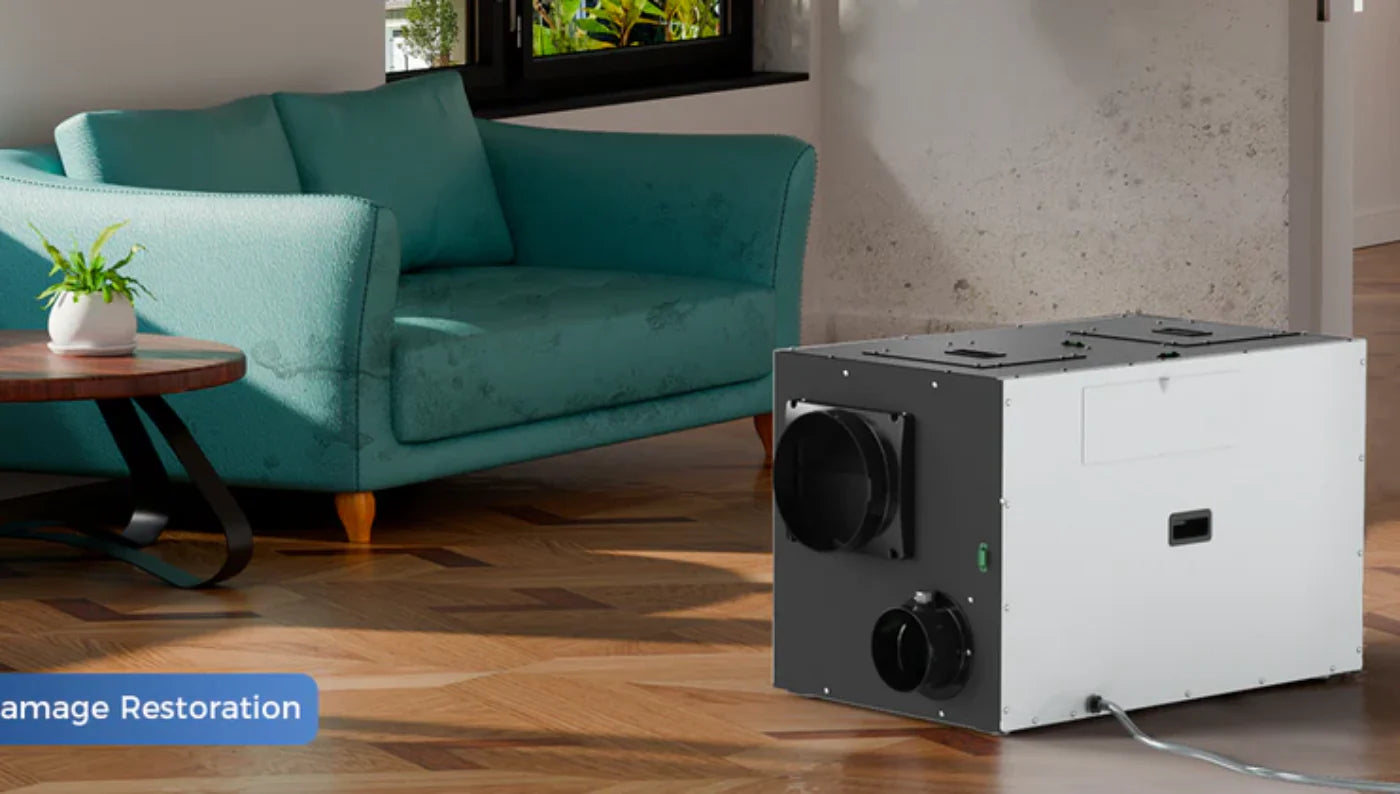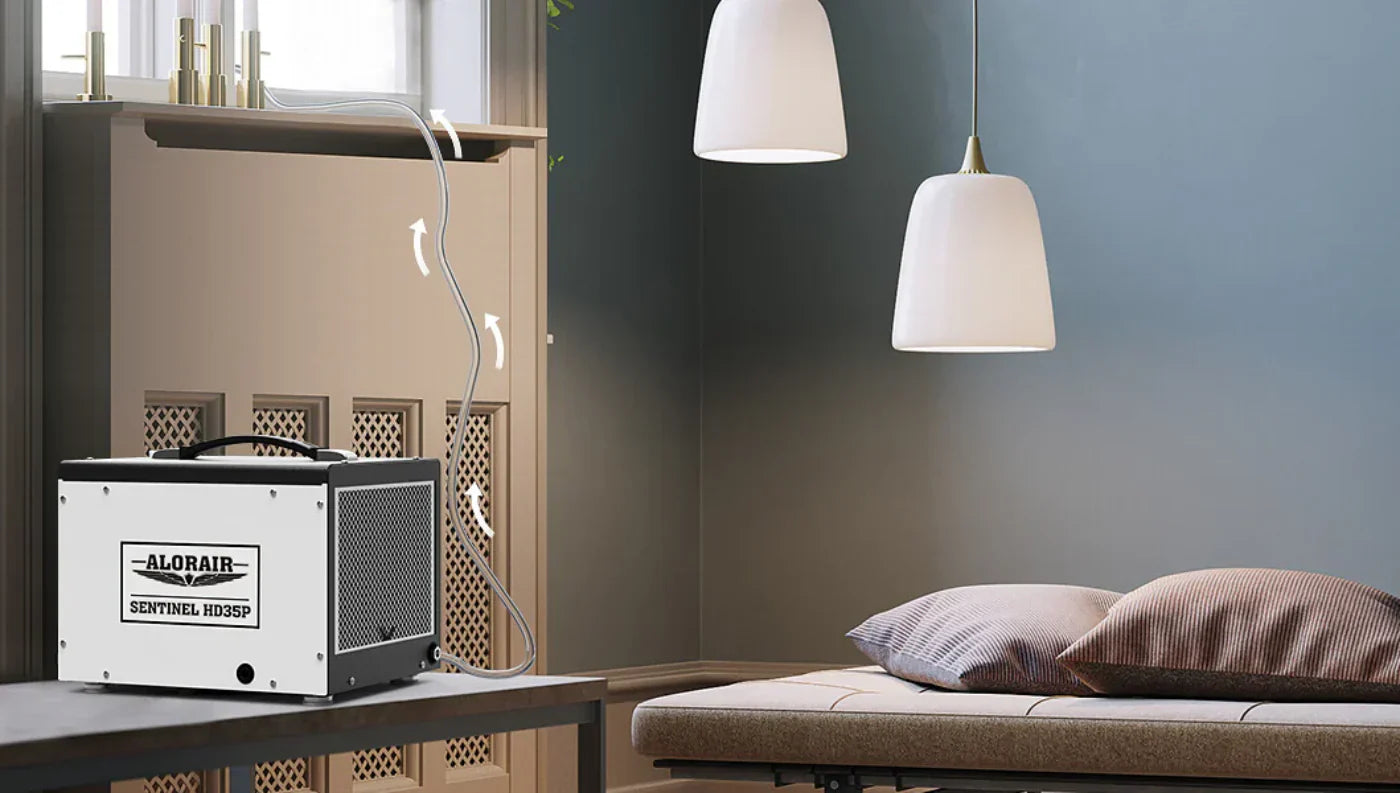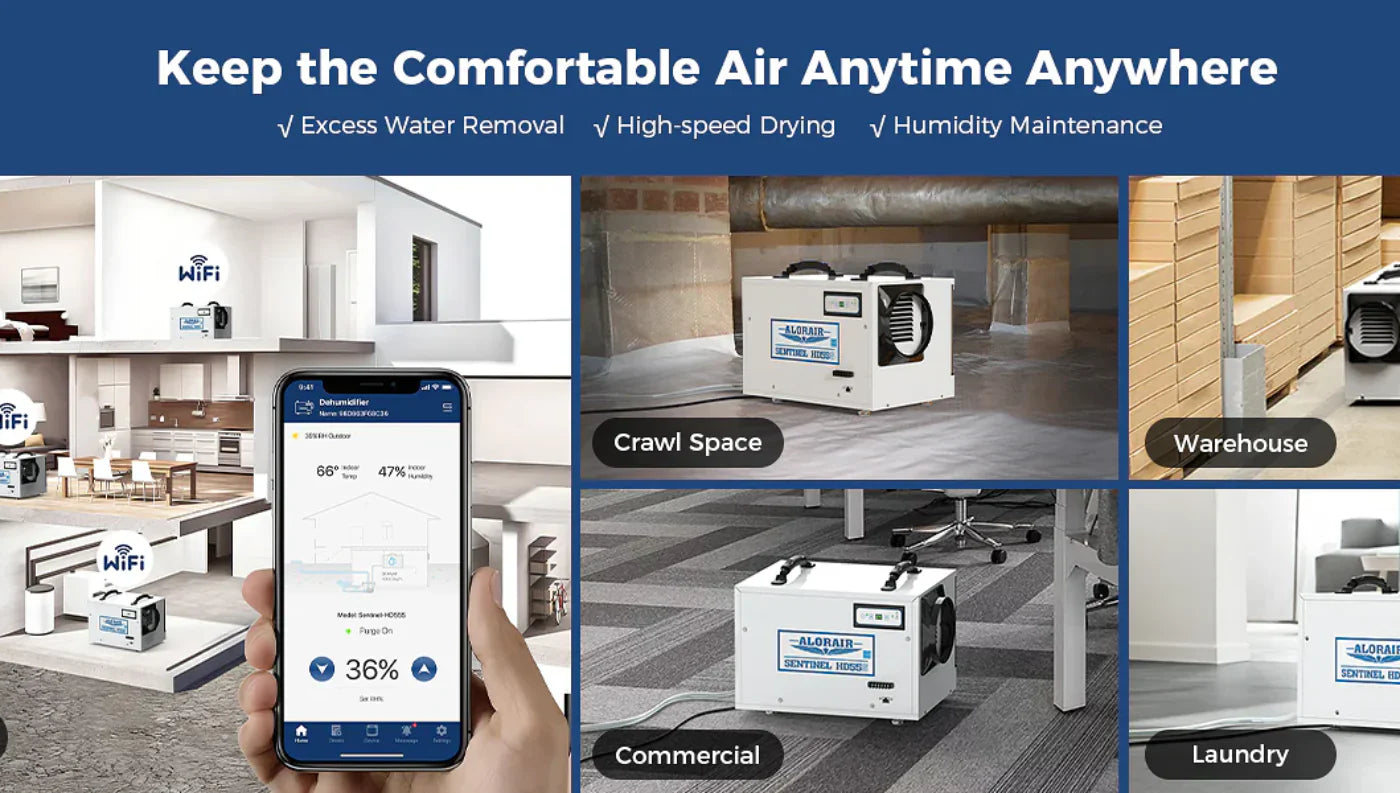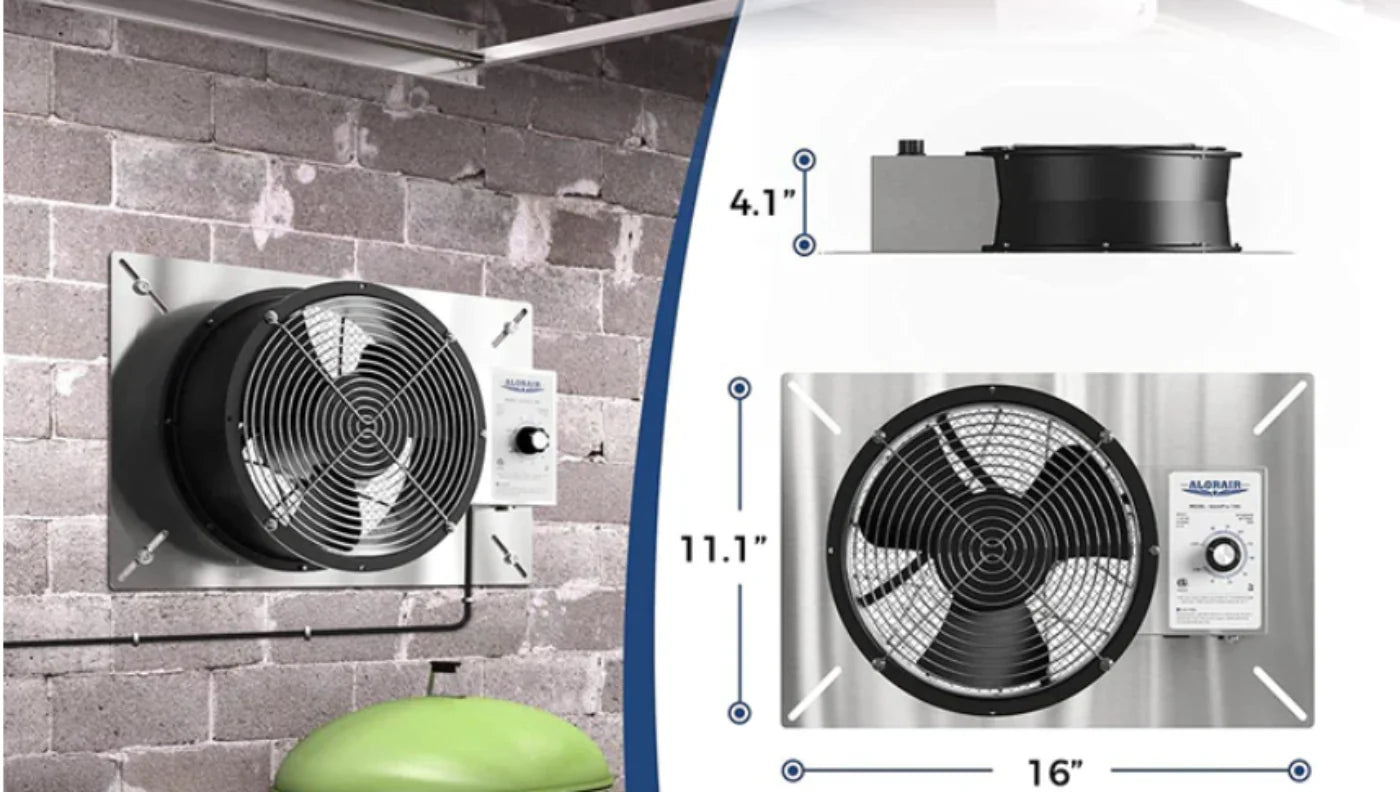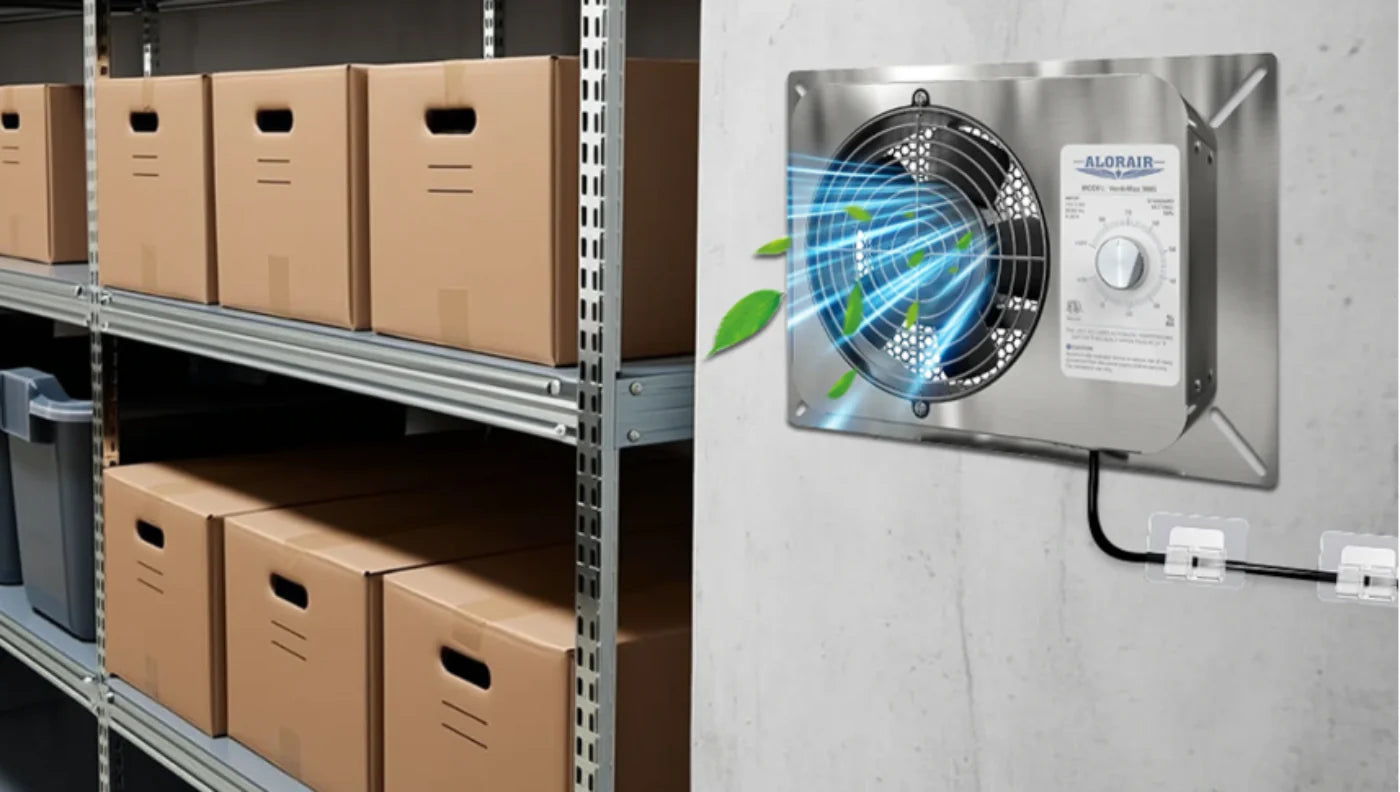Understanding Dehumidifiers and Air Conditioners
To grasp how these devices can work in tandem, it's essential to understand their individual functions.
How Dehumidifiers Work
The purpose of dehumidifiers is to eliminate excess moisture from the air. They work by drawing in humid air through a fan, cooling it to condense the moisture, and then reheating the air before releasing it back into the room. This process effectively reduces humidity levels but doesn't significantly cool the air.
Dehumidifiers typically use a refrigeration cycle similar to that of an air conditioner but focus solely on moisture removal. They are available in various sizes and capacities, making them suitable for different spaces—from small rooms to larger areas like basements.
For example, the AlorAir Sentinel HD55 is a powerful whole-home dehumidifier that can remove up to 55 pints of moisture per day, making it ideal for larger spaces or areas with persistent humidity issues.
How Air Conditioners Work
Air conditioners primarily cool the air while also removing some moisture as a byproduct of the cooling process. They function by pulling in warm air from the room, passing it over cold evaporator coils filled with refrigerant, which absorbs heat and moisture from the air. The cooled air is then recirculated back into the space.
There are many different kinds of air conditioners, such as window units that are portable and meant for a single room or central systems that cool an entire house. Each type has its own efficiency ratings and cooling capacities.

Key Differences Between the Two Devices
The key difference lies in their primary functions: dehumidifiers focus on moisture removal, while air conditioners prioritize temperature reduction. This distinction is crucial when considering their impact on energy consumption and comfort. While both devices can lower humidity levels, they do so with different mechanisms and end goals.
The Connection Between Cooling and Humidity
Humidity plays a significant role in how we perceive temperature. High humidity levels can make a room feel warmer than it actually is because moisture in the air prevents sweat from evaporating efficiently, which is our body's natural cooling mechanism. This is why a humid 75°F can feel much less comfortable than a dry 75°F.
Humidity also has an impact on air conditioner efficiency. When the air is humid, air conditioners have to work harder to cool the space, consuming more energy in the process. They need to use more energy to remove the extra moisture in addition to lowering the air's temperature.
Example of Humidity Impact
For instance, consider a scenario where your home’s indoor humidity level is at 70%. Your air conditioner will struggle to cool this space effectively because it must first remove moisture before lowering the temperature. In contrast, if you use a dehumidifier to bring that humidity level down to around 50%, your AC will operate more efficiently since it can focus on cooling rather than dehumidifying simultaneously.
Air Conditioners vs. Dehumidifiers Alone
A dehumidifier alone will not lower your air conditioning bill. Dehumidifiers are not designed to cool rooms like air conditioners do. In fact, dehumidifiers generate a small amount of heat as they operate, which could potentially increase the workload on your air conditioner if used in isolation.
However, while a dehumidifier won't directly reduce your cooling costs, it can play a crucial role in creating a more energy-efficient cooling system when used in combination with your air conditioner.
Combining Dehumidifiers and Air Conditioners
The real magic happens when you use dehumidifiers and air conditioners together. This combination can lead to energy savings and increased comfort. Here's how:
- Higher Temperature Settings:By reducing humidity levels, dehumidifiers allow you to set your air conditioner to a higher temperature while maintaining comfort. The Department of Energy recommends setting your AC to 78°F (25.5°C) for optimal energy efficiency.
- Reduced Workload on AC:Dehumidifiers can handle the bulk of moisture removal, allowing your air conditioner to focus primarily on cooling. This reduces the AC's workload, potentially leading to lower energy consumption.
- Perceived Cooler Air:Drier air feels cooler, which means you may be able to run your air conditioner less frequently or at a higher temperature setting without sacrificing comfort.
- Improved Indoor Comfort:Using both devices together creates an environment where you feel cooler at higher temperatures due to reduced humidity levels.
How to Use a Dehumidifier to Cut Your AC Bills
To maximize energy savings when using a dehumidifier with your air conditioner, consider the following strategies:
-
Set Your AC at Higher Temperatures:Set your air conditioner to around 78°F (25.5°C) during peak hours when outside temperatures are high.
-
Use Dehumidifiers in Humid Areas: Use dehumidifiers strategically in specific areas with high humidity levels—such as basements or laundry rooms—where excess moisture tends to accumulate. The AlorAir 198 PPD Crawl Space Dehumidifier is designed to handle extreme moisture conditions.
-
Time It Right:Run the dehumidifier during cooler parts of the day (early morning or late evening) when outside humidity levels may be lower.
-
Get the Right Size:Ensure both your dehumidifier and air conditioner are appropriately sized for your space; oversized units can lead to inefficient operation.
-
Regular Maintenance:Maintain both devices regularly by cleaning filters and coils to ensure they operate at peak efficiency.
-
Take Advantage of Smart Technology:For the best results, use humidity sensors and smart thermostats that detect and adjust settings automatically based on the environment.
-
Increase Ventilation: To increase ventilation in your home, install exhaust fans in the kitchen and bathroom. This will help lower indoor humidity levels before they become an issue.
-
Seal Leaks: Ensure windows and doors are sealed properly; this prevents humid outdoor air from entering your home while keeping conditioned air inside.

Additional Benefits of Using Both Devices
Using dehumidifiers and air conditioners together not only offers potential energy savings but also provides several additional benefits. Lower humidity levels can reduce mold growth, mildew, and dust mites, leading to improved indoor air quality and a healthier environment for you and your family. To combat mold and mildew effectively in large or extremely humid areas, the AlorAir Sentinel HDi90 Dehumidifier offers high-capacity moisture removal and can be integrated with your existing HVAC system for optimal performance.
By sharing the workload of moisture removal, these devices can reduce wear and tear on air conditioning units, potentially extending their lifespan and saving you money on repairs and replacements.
Lower humidity and cooler temperatures together improve your living area's overall comfort level. It may also have the biggest beneficial effect on asthma and allergy symptoms by reducing airborne allergens that trigger attacks.
Optimizing Your Home's Climate: The Dehumidifier-AC Synergy
While a dehumidifier alone won't lower your air conditioning bill, using it in combination with your AC can potentially lead to significant energy savings. Remember that every home is unique, and finding the right balance between temperature control and humidity management may require some experimentation with settings based on climate conditions specific to where you live.
AlorAir offers a variety of residential crawlspace dehumidifiers, as well as commercial units designed to fit your specific needs for humidity-control solutions. By understanding how these devices work together and implementing the strategies outlined in this article, you can create a more energy-efficient cooling system for your home or office space.




